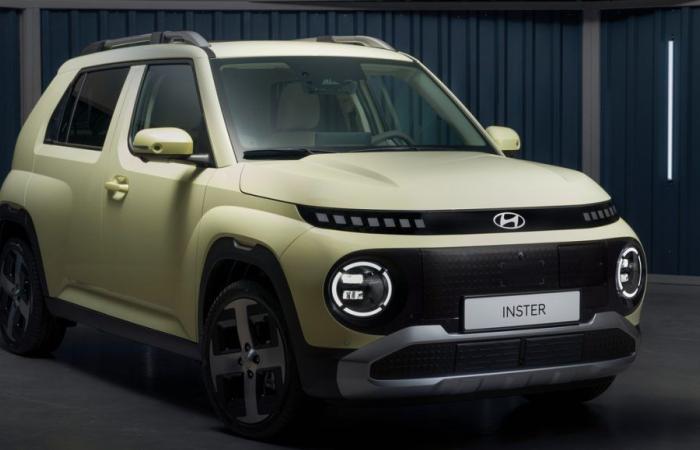We told you two weeks ago about this little Hyundai Inster that was supposed to arrive in Europe. It’s done. The model, which looks like a mini SUV, is 100% electric, has a nice style and offers a very decent range and engines to compete with the Dacia Spring and Citroën ë-C3.
Advertisement, your content continues below
Full of intelligence
Aesthetically, the Inster takes up the style of the South Korean Casper, with redesigned front and rear bumpers, 15 or 17-inch rims and pixel graphics on the front and rear lights (a gimmick of Hyundai electrics).
Above all, the Inster is much longer and extends over 3.83 meters (+23 cm), 1.61 meters wide and 1.56 meters high. It owes this to its wheelbase, immense for the category, of 2.58 meters.
This frees up unexpected and particularly well thought-out interior space. Rear passengers will not have to complain about the available legroom, which is generous for the legs, or the headroom. But if you instead need space in the trunk and no passenger in the second row, you can slide the bench seat by 16 cm and increase the trunk volume from 280 to 351 liters.
enlarge
If additionally needed, absolutely all seats can be folded down to form an almost flat floor. All of them, yes, even that of the driver.
At the front, the dashboard displays two 10.25-inch screens, one, touchscreen, for infotainment and the second, behind the steering wheel, which acts as an instrument cluster. We can also note, not without pleasure, the presence of physical air conditioning controls (automatic as standard), which is always beneficial in terms of ergonomics and safety.
Advertising, your content continues below
The highest trim level offers surprising equipment at such a high level of range, with heated seats and steering wheel, sunroof, wireless charger, ambient lighting and a plethora of ADAS: anti-collision system with blind spot detection, rear traffic detection system with braking function, adaptive cruise control with Stop and Go function, active driving assistance on the highway, etc. There is even the 360° camera to help you park this otherwise tiny vehicle.
Engines and autonomy
The Hyundai Inster will be available with Standard and Long Range engines. The former delivers 97 hp and 147 Nm thanks to a 42 kWh battery, allowing it to travel more than 300 km on a single charge.
The second has a 115 hp engine and a 49 kWh battery, allowing you to cover a comfortable distance of 355 km. It places itself advantageously against the Dacia Spring (65 hp and 230 km WLTP) and the Citroën e-C3 (113 hp and 320 km).
On the charging side, the Inster can go from 10 to 80 percent in just 30 minutes via its 120 kW DC charger. For the AC charger, which delivers 11 kW, charging lasts between 4 hours and 4 hours 35 minutes depending on the size of the battery. Additionally, the V2L feature allows for two-way charging of other devices like e-bikes and camping gear.
As for the prices, the mystery reigns. But given the equipment or even the battery sizes, it seems very unlikely to us that the entry-level model will be offered at less than €20,000.
Advertisement, your content continues below






